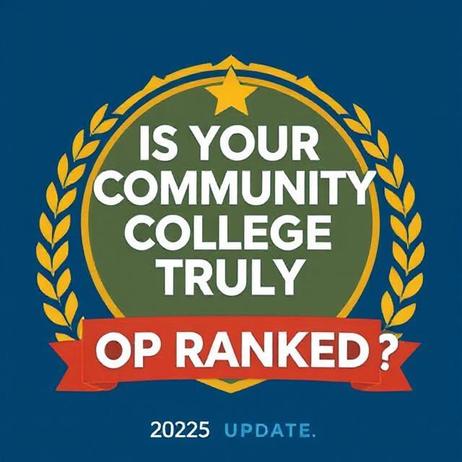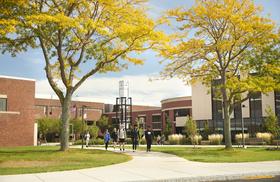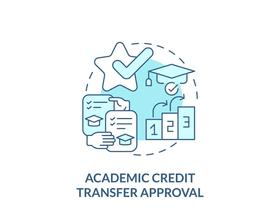Is Your Community College Truly Top Ranked? (2025 Update)
In 2025, the question “Is your community college top ranked?” carries new weight. The metrics that define a standout two-year institution have evolved—and so should the way students, families, and educators evaluate them. In this updated version of Is Your Community College Top Ranked?, we revisit the structure and logic of the original, infusing it with up-to-date data, policy shifts, and case studies. Our aim: help you assess whether a community college is truly among the best—and whether that ranking matters for your goals.
Why Rankings Still Matter (But Only if You Know Which Ones to Use)
Originally, many observers pointed to Washington Monthly’s rankings of community colleges as a high-visibility benchmark. That publication, using data including the Community College Survey of Student Engagement (CCSSE), remains influential. But in 2025, it competes with a wider array of rankings and accountability tools.
Today, the Aspen Prize for Community College Excellence stands out as a gold standard of peer-reviewed recognition. In October 2023, the Aspen Institute announced 150 institutions eligible for the 2025 Prize, based on improvements in retention, completion, transfer, and equity of outcomes. Achieving finalist status in the Aspen competition is often viewed by prospective students as a strong signal of institutional effectiveness.
Still, no ranking is perfect. Many colleges resist comparisons based solely on rankings. As the CCSSE has long warned, quantitative ranking systems can obscure qualitative strengths or local mission fit.
Thus, rankings are a useful starting point—not the final word.
What Makes a “Top Ranked” Community College in 2025?
When you see a ranking that purports to name the “top” community colleges, here’s what to check:
1. Outcomes Over Inputs
In 2025, the focus falls less on inputs (e.g. faculty credentials) and more on student outcomes: persistence rates, credential completion, transfer success, and post-graduation employment.
According to the 2025 WalletHub ranking of over 650 two-year colleges, State Technical College of Missouri topped the list, driven by a 90 % retention rate and a 79 % graduation rate.
WalletHub’s methodology also weights career outcomes—median earnings and job placement—heavy enough that “top ranked” often correlates with tangible return on investment.
AcademicInfluence’s 2025 list underscores the same priority: colleges with solid transfer patterns, alumni influence, and upward mobility gain prominence.
Thus, a college that is “top ranked” must demonstrate sustained results—not just promising inputs.
2. Equity and Inclusion
One of the most important developments in recent years is the rising attention to whether institutions deliver equitable outcomes for underrepresented students. The Aspen Prize, for instance, assesses gains for Black, Hispanic, and low-income students. Aspen Institute
A college that lifts outcomes across racial, socioeconomic, and adult learner groups deserves greater weight—even if its overall ranking is not top three.
3. Net Price, Not Sticker Price
By 2025, many rankings consider net cost (after grants, waivers, and institutional aid), not just published tuition. In an era of inflation and unpredictable state funding, net cost is often the real gatekeeper for access.
For example, WalletHub continues to rank colleges by cost and financing as one pillar of its methodology. WalletHub Maryland, for instance, was ranked the top state for community colleges in part because of strong affordability mechanisms and five institutions in the top 40 nationally.
4. Transfer Partnerships & Pathways
A truly top-ranked community college in 2025 will have formal agreements (2+2 pathways, guaranteed admission programs) with four-year institutions.
Many of the colleges chosen for Aspen eligibility or high rankings on Learn.org and other aggregators emphasize seamless transfer metrics (e.g. bachelor’s degree attainment) as a core measure of success. learn.org+1
A college that functions mostly as a terminal vocational provider—even if effective in that domain—will not score well in broad comparative rankings.
5. Innovation & Workforce Alignment
In 2025, top community colleges are those that adapt rapidly to labor market trends—bio-health, clean energy, AI/tech reskilling, cybersecurity—and partner with industry.
For example, Montgomery College in Maryland has been singled out (by WalletHub) not just for retention and graduate salaries, but for granting credit for life experience and aligning with regional economic needs. Bethesda Magazine+1
Similarly, some Texas colleges have implemented free-tuition pilot programs, driving surges in enrollment and requiring nimble expansion. Austin Community College, for instance, added 500 class sections and hired dozens of adjuncts in 2025 to keep pace with demand.
From Metrics to Judgment: A 6-Point Checklist for 2025
When evaluating whether your community college is “top ranked,” run through this updated checklist:
| Criterion | Why It Matters | What to Ask / Find |
|---|---|---|
| Outcome Metrics | Performance trumps prestige | What are 1→2-year retention, graduation, and transfer rates? How have they changed over time? |
| Net Cost vs. Sticker Price | Affordability is essential | What is the average net cost after grant aid? What percentage of students receive institutional support? |
| Equity of Outcomes | Inclusiveness reflects mission | Do outcomes improve for Black, Hispanic, adult learners, or Pell-eligible students? |
| Transfer & 4-year Partnerships | Ultimate success often lies beyond | Which universities accept transfers, and how many former students complete bachelor’s degrees? |
| Labor-Market Fit & Innovation | Colleges must adapt | Are programs responsive to regional industries (health, tech, trades)? Do they offer credit for work/life experience? |
| Recognition & Peer Validation | External affirmation helps | Has the college been named Aspen-eligible, finalist, or otherwise cited in credible rankings (WalletHub, Niche, Washington Monthly)? |
If your college rates highly on most of these dimensions—and especially if it outpaces peer institutions in your region—then it may legitimately qualify as “top ranked” in 2025. Case in Point: Montgomery College and State Technical (MO)
Montgomery College (MD) offers an instructive example. In 2025, it was part of Maryland’s dominance of community college rankings, and has consistently scored for median graduate earnings, retention, and innovation in crediting life experience.
Those aren’t incidental wins—they reflect sustained strategy alignment with workforce demand.
Meanwhile, State Technical College of Missouri offers a counterpoint: with an extraordinary retention rate (90 %) and graduation rate (79 %), it captures top billing in many national comparisons. But note: State Technical is a specialized technical institution, not a broad general-education college. Its ranking is compelling—but you must consider mission alignment when comparing it to more comprehensive colleges.
Should Rankings Guide Your Decision?
Short answer: yes—but carefully.
Rankings can help you shortlist institutions worth deeper review.
But choosing a community college based solely on ranking is risky: a lower-ranked institution with strong programs in your field of interest may beat a “top ranked” college that lacks those offerings.
Use the 6-point checklist (above) as your guide, supplemented by campus visits, conversations with faculty or advisors, and reviewing longitudinal data from the U.S. Department of Education’s College Scorecard or integrated Postsecondary Education Data System (IPEDS).
If your intended college doesn’t appear on a prominent top-50 list, that is not by itself a disqualifier—assuming it performs well on the metrics you care about.
What’s New in 2025 That You Should Know
Greater emphasis on equity metrics in rankings like Aspen and WalletHub means institutions can no longer “hide” under average outcomes.
Inflation and funding volatility make net cost more volatile—and more critical to scrutinize.
Credit for prior experience is becoming more common—and rewarded in rankings (e.g. Montgomery).
Rapid enrollment shifts driven by free-tuition pilots or economic cycles force agile institutions to expand on short notice (as seen at ACC in 2025). Statesman
State systems matter: some states (like Maryland and New Mexico) are consistently high performers on average community college quality, while others lag behind.
In a landscape this dynamic, the title “top ranked” is not static—it must be earned, year after year.
Final Thoughts: Ranking as a Tool—not a Trophy
Is your community college top ranked in 2025? The answer is: maybe. And maybe for the things you care most about. A truly top-ranked community college now must deliver outcomes, equity, and innovation—not just enroll large numbers or carry local prestige.
As you (or your student) weigh options, let rankings point you toward colleges worth scrutinizing. Then dig deeper: review institutional data, compare programs, talk to alumni or advisors—and use the checklist above. In doing so, you’ll better assess not which college is highest ranked, but which one is top ranked for your goals.
If you’re curious about how specific colleges compare today—or want to see recent data on retention, equity, or net cost—let me know. I can help you dig into the numbers or interpret a college’s performance in 2025 with clarity.















